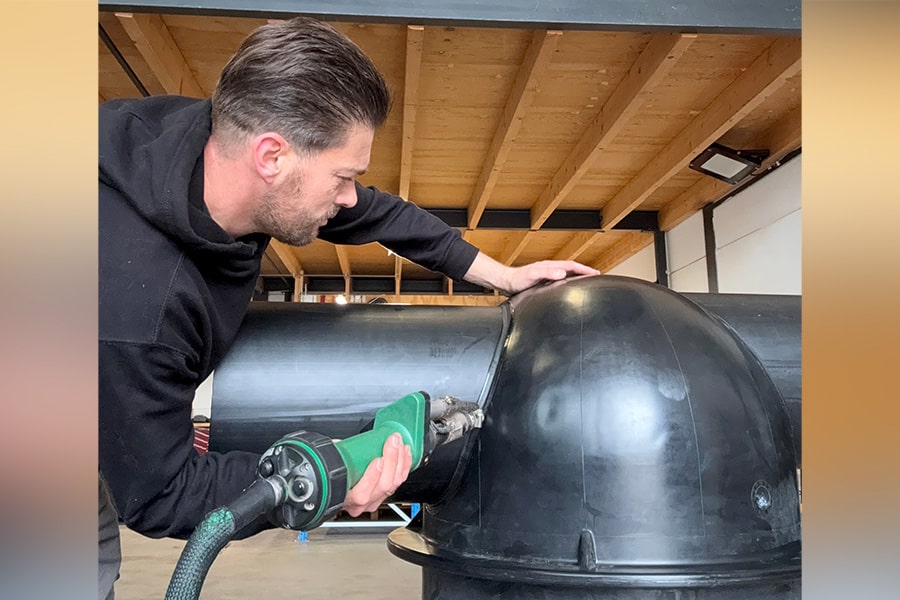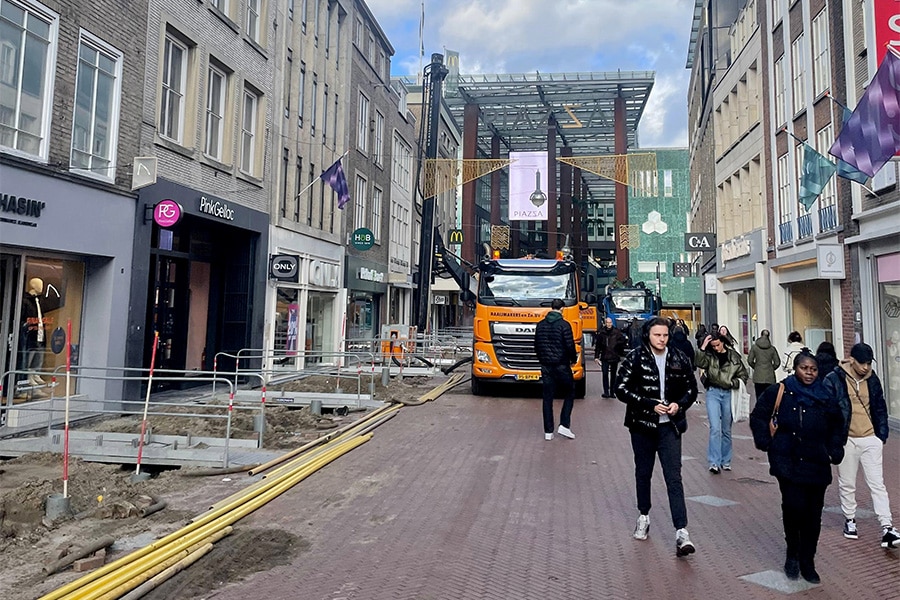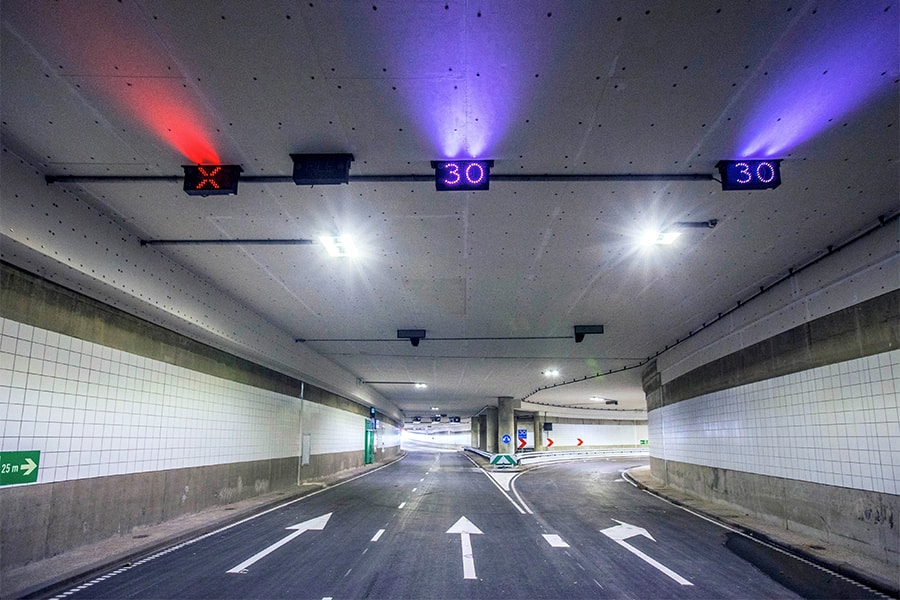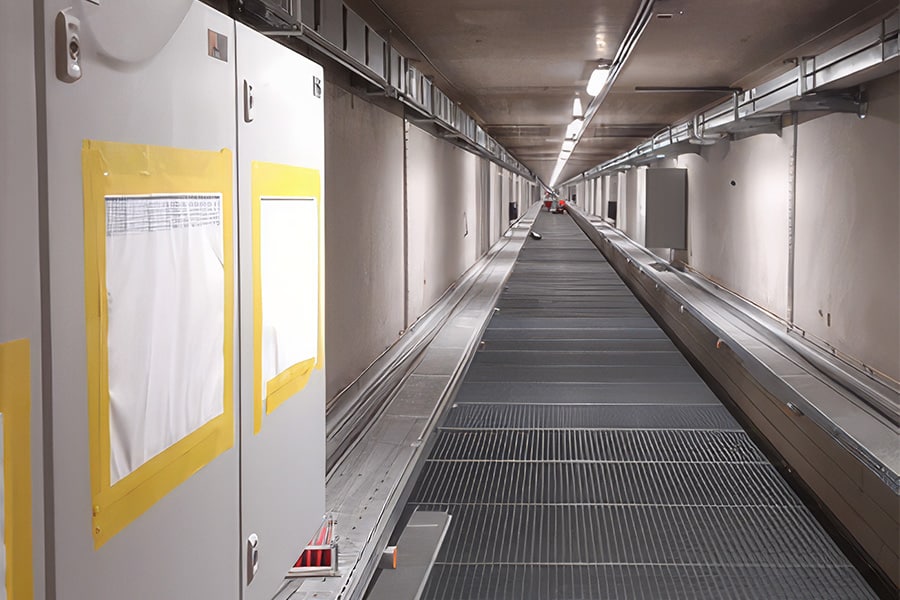
Direct voltage in tunnels worth considering
Sometimes it makes sense to re-examine an existing concept. Is it still in line with the latest technology? A good example is the power supply for the Rottemer Tunnel in the A16 Rotterdam motorway. A conscious choice was made to use direct current (DC) in combination with busbar trunking. According to its creators, this is not only more efficient, but also leads to significant cost savings. The concept may also offer potential in future tunnel renovation projects.
When you consider that 90 to 95% of the installations in a tunnel run on DC voltage, it's odd to use AC voltage as a power supply, says Hans Pos, design manager at Croonwolter&dros. "Why? Because we happened to think of it that way a hundred years ago? But is that still a logical solution? No, not exactly. So we built the largest direct voltage installation in the world in the Rottemer Tunnel. And the funny thing was, the Department of Public Works also had immediate confidence in it. They couldn't find any objections from the National Tunnel Standard (LTS) not to do it."
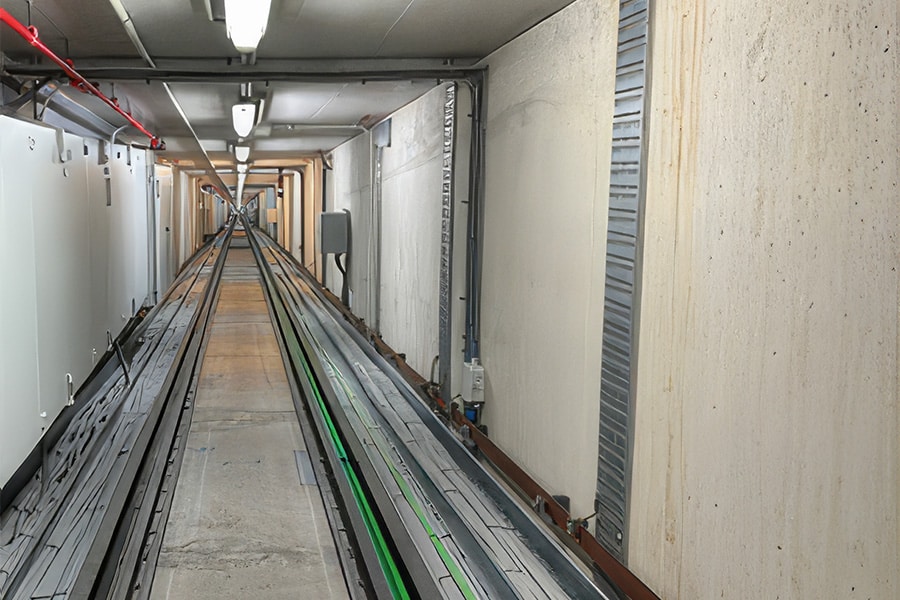

Spot the differences: on the left, an alternating current tunnel with many cables. On the right, the middle tunnel channel of the Rottemer Tunnel.
11 kilometers of DC network
Making the decision to go DC is one thing, actually bringing it to fruition is another challenge, Hans now knows from experience. "It was virgin territory," he says. "We did have a certain picture of what the installation should look like, but it was still quite a puzzle. In the process we discovered, for example, that linking the solar panel field caused problems in creating a good and stable network, although in theory it should be possible. The suppliers were not always on board either. We had expected to get more support from suppliers from the DC world, but that was disappointing. As a team, we had to research, design and figure it all out ourselves. Although we obviously learned a lot from that, and we are proud of the fact that we have built an 11-kilometer-long and stable DC network with complete tunnel installations running on DC voltage. Only the pumps and fans run on AC voltage."
Rail sleeves
The nice thing about such a route is that you don't know in advance exactly how it will turn out, says Hans. "By combining direct current with busbar trunking it turned out that we needed far fewer cables and therefore copper. We could also manage with much thinner cables. Another big advantage is that we do the conversion from AC to DC voltage at a voltage level of 700 volts at one central point. At the place where we need it, the voltage level is reduced to 350 Volts, for lighting, for example. Because you do the conversion centrally, heat loss occurs only at one point. That heat can be reused much more easily. Theoretically, direct voltage would also yield energy savings, but only minimally. The biggest savings lie in a completely different structure of the cabling with far fewer and thinner cables. It has saved us and thus client Rijkswaterstaat many hundreds of thousands of euros."
Building and renovating smarter with new technologies
According to Hans, the combination of direct current with busbar trunking also offers potential for tunnel renovation projects. "Replacing installations and cabling in existing tunnels is often a hell of a job. Cable ducts are overcrowded. Whereas if you make a busbar duct at DC you only have to mount the busbar duct, hang cabinets and roll out the network. The moment you want to replace (at a later stage) any installation, you already have DC voltage lying around from which you can branch off quite easily." According to Hans, we need to build and renovate smarter by using new technologies. He also advocates a change in the LTS. "Currently a complete busbar trunking is constructed on AC because of the sockets for emergency services, while they are never used. Emergency services bring their own power supply. We would also like to discuss this with the Department of Public Works."
It is important that we build a total installation that is right, and not with the mindset of necessarily wanting to introduce something new, Hans acknowledges. "Direct current is extremely interesting and reliability also goes up because you can 'tie' power supplies together much more easily. Should one inverter fail, the other takes over. And with a busbar sleeve in the center tunnel channel, you can also transport energy much easier, without having to use lots and lots of thick cables. In short, a fresh look at a (tunnel) installation offers opportunities, also, or perhaps especially, for renovation projects."
Heeft u vragen over dit artikel, project of product?
Neem dan rechtstreeks contact op met Croonwolter&dros.
 Contact opnemen
Contact opnemen
